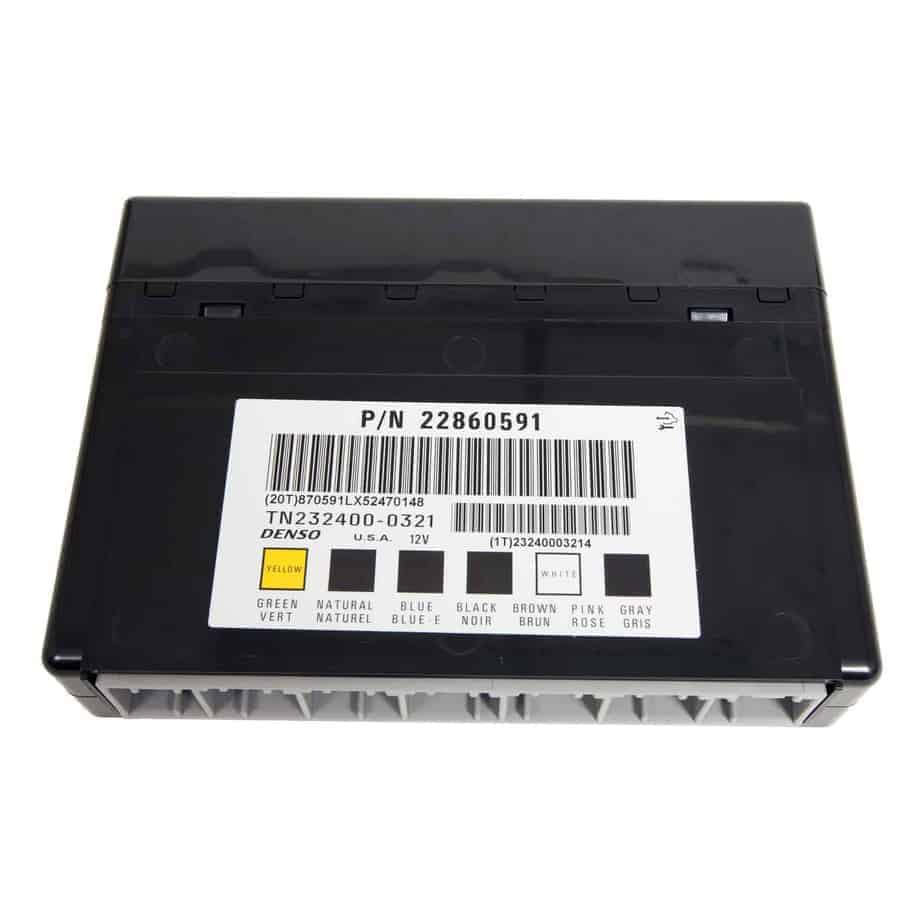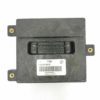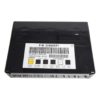Restore Your Vehicle’s Electrical System with a Pre-Programmed BCM
If you’re dealing with bizarre and frustrating electrical problems in your 2011-2013 Chevrolet Caprice, a failing Body Control Module (BCM) is often the culprit. As the central command for your vehicle’s body electronics, a faulty BCM can cause a cascade of issues that seem unrelated, from flickering lights to a car that won’t start. This isn’t just an inconvenience; it can compromise your vehicle’s safety and reliability. This replacement BCM, part number 25847589, is your direct-fit, hassle-free solution.
A Technician’s Notebook: The Ghost in the Machine
I recently had a 2012 Caprice PPV (Police Pursuit Vehicle) in my bay that was giving the department fits. The dome lights would stay on, the power locks worked intermittently, and occasionally the security light would flash, preventing it from starting. The officers thought the car was haunted. After hooking up my scan tool, I found a slew of communication errors (U-codes) pointing to a network problem. Instead of chasing wires for hours, my experience pointed me directly to the BCM. These modules are the traffic cops of the car’s data network. When they fail, they send scrambled signals everywhere. We installed a VIN-programmed BCM just like this one, and instantly, all the gremlins vanished. It’s a common failure, and this is the definitive fix.
Is Your Vehicle Showing These Symptoms?
A failing BCM can manifest in many ways. If you’re experiencing any of the following, it’s a strong indicator that your Body Control Module needs attention:
- ✔ Erratic interior or exterior lights (flickering, staying on, or not working at all).
- ✔ Power windows, door locks, or mirrors operating intermittently or not at all.
- ✔ The security system acting up, causing no-start conditions or false alarms.
- ✔ The radio or instrument cluster randomly shutting off or behaving strangely.
- ✔ Multiple warning lights on the dash with no clear cause.
- ✔ Diagnostic Trouble Codes (DTCs) related to communication failures, such as U0100, U0140, or other U-series codes.
The Smart Solution: Pre-Programmed for Your VIN
Why choose our BCM? Because we take the biggest headache out of the repair process: programming. A new BCM from the dealership is just a blank box that requires expensive, specialized tools to make it work with your car. We eliminate that step. Simply provide us with your vehicle’s VIN (Vehicle Identification Number) during checkout, and our experts will program the module with the latest GM software specific to your 2011-2013 Caprice BCM. It arrives at your door ready for installation, saving you time, money, and a trip to the dealer.
A Straightforward Guide to BCM Installation
Replacing the BCM is a manageable job for a confident DIYer or any professional mechanic. While the exact location can vary slightly, it’s typically found in the dash area.
- Safety First: Always disconnect the negative terminal from your vehicle’s battery and wait a few minutes to allow all systems to discharge.
- Locate the BCM: On the 2011-2013 Caprice, the BCM is generally located in the dashboard, often on the driver’s or passenger’s side behind a kick panel or the glove box.
- Disconnect and Remove: Carefully unplug the electrical connectors. They have locking tabs that must be depressed. Once disconnected, unbolt or unclip the old module and remove it from the vehicle.
- Install the New BCM: Mount your new, pre-programmed BCM in the same location and securely reconnect all electrical connectors. Ensure they click into place.
- Reconnect the Battery: Reattach the negative battery terminal.
- Perform Post-Install Procedures: This is a critical step. You will need a capable bi-directional scan tool to perform two key functions: the ‘Setup SDM Primary Key in BCM’ to sync the airbag system and extinguish the airbag light, and potentially a ‘Brake Pedal Position Sensor Calibration’. Failure to do these steps can result in warning lights and improper system function.
Guaranteed Fitment for Your GM Vehicle
This module is a direct replacement for a wide array of GM vehicles and part numbers. If your original module has any of the following numbers, this unit will work for you: 10382479, 15093910, 15276271, 15299986, 15819552, 25847589, 25892622, and many more. It’s designed for a perfect fit and function in models including:
- ✔ 2011 – 2013 Chevrolet Caprice
- ✔ 2007 – 2012 GMC Acadia
- ✔ 2006 – 2013 Chevrolet Impala
- ✔ 2008 – 2013 Cadillac CTS
- ✔ 2008 – 2012 Chevrolet Express / GMC Savana Vans
- ✔ 2010 Cadillac Escalade, Chevrolet Tahoe/Suburban, GMC Yukon
- ✔ …and many other GM cars, trucks, and SUVs. Please verify your part number or contact us for fitment confirmation.
Frequently Asked Questions
Do I need to get this 2011-2013 Caprice BCM programmed by a dealer?
No. We handle the programming for you before we ship the part. Just provide your vehicle’s VIN at checkout, and it will arrive ready to be installed, saving you hundreds in dealer fees.
What information do you need from me?
All we need is your vehicle’s 17-digit VIN. This allows us to load the correct software and vehicle-specific options into the BCM, ensuring it works seamlessly with your car.
What happens after I install the module?
After installation, you must perform the ‘Setup SDM Primary Key in BCM’ procedure with a professional scan tool to sync the BCM with the airbag system. A brake pedal position sensor recalibration may also be required. These are standard procedures for BCM replacement.
Is this a difficult part to replace myself?
For someone with moderate mechanical skill, it is a very doable job. The main challenges are accessing the module’s location within the dash and having the proper scan tool for the post-installation procedures. If you are not comfortable with these steps, we recommend professional installation.
Will this fix my car’s specific electrical problem?
This BCM will fix problems directly caused by a faulty module. If you’re experiencing the common symptoms listed above, there is a very high probability this is your solution. However, we always recommend a proper diagnosis to rule out other issues like bad wiring or faulty sensors.



